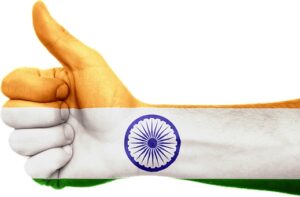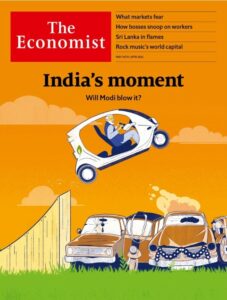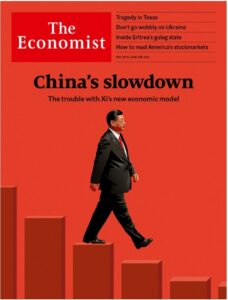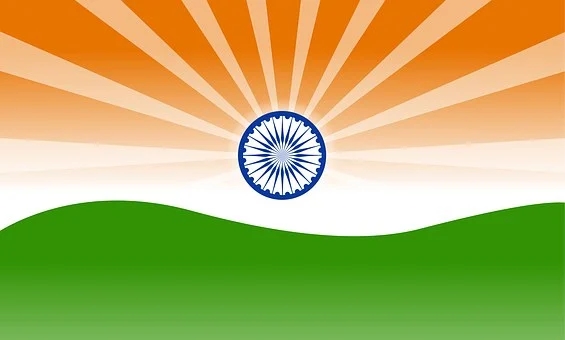India’s Economic Growth Story: A time to rejoice
The world is currently in chaos. It’s facing problems of Inflation, food grain shortages, sky-high oil prices, and supply disruption. But amongst this turmoil, there is something that stands out which is India’s economic growth story. This story is inspired by the cover story of the Economist magazine issue dated 14th May 2022. The world’s number 1 magazine has reported India’s economic growth story as a cover story and it’s definitely a moment to rejoice.

As the pandemic recedes, the world has been exposed to another challenge and that is the invasion of Ukraine by Russia. There is mayhem across every sector. The energy prices have shot through the roof amongst a global shortage of oil. On the other hand, Russia which is a big exporter of oil and gas has been put on a banned list. Russia and Ukraine together supply 28% of globally traded wheat, 29% of the barley, 15% of the maize, and 75% of the sunflower. A war between them means that the global supplies have been disrupted.
The food shortage worldwide
Nations like Lebanon, Tunisia, Libya, and Egypt are trying desperately to source essential commodities from other countries. But it is proving to be a challenge. Countries like India have banned the export of wheat while Indonesia has banned the export of palm oil (though now resumed).
Apart from the shortages, every country is facing a challenge at home caused by a disruption in supplies due to the pandemic. Inflation has jumped manifold. Imagine a country like Britain where the annual rate of inflation has touched 9% in April. The US and EU and even countries like India are facing an unprecedented hike in inflation. Central banks are raising interest rates to control the rising prices but without much success.
India stands out!

India as a country has always intrigued the world. It has the world’s 2nd largest population, a huge middle class, and a young workforce but despite this, it has never realised its full potential. On the other hand, our next-door neighbour China has raced ahead by leaps and bounds.
But post-pandemic few factors seem to be working in India’s favour. A vast unified national market is helping firms to achieve economies of scale. Unicorns are multiplying to satiate the hunger of a growing consumer class. From grocery to food delivery in 10 minutes to ride-hailing apps, Unicorns are mushrooming across the country. With more than 100 unicorns (unlisted startups valued at over $1billion and above) India ranks number 3 behind the US and China. It’s probably one of the reasons why Shark tank a TV series on start-ups became so popular recently.
The factors behind India’s economic growth story

India was the world’s 10th largest economy when PM Narendra Modi took over the reign in 2014. In the following eight years of his leadership, the country has grown by 40%. However, in the same period, China grew by 53% and surpassed all other big economies including India. But China is slowing down due to its strict covid control measures.

As per IMF India is expected to grow by 8% this year which will be the highest among the big economies. It predicts that by 2027 India will be the world’s 5th largest economy with a GDP of roughly $5 trillion. Today in terms of the size of the stock market, India ranks number 4 behind the USA, China, and Japan.

India’s economic growth story is being fueled by a four-stage rocket booster. All the boosters will help propel the country into a growth orbit that will take India to the next level.
The technology booster engine that’s powering a single national market
Aadhaar, a biometric identification system has given every citizen in this country a digital identity. Though started by the previous government, the Modi govt has championed it thereby creating a national database. Today Aadhaar is helping Indians from opening a bank account to getting a driving license. To ensure that any dole given by the government reaches the deserving person the govt ensured the opening of bank accounts. As a result, the govt could transfer funds to the needy during the pandemic directly into their accounts.

One of the biggest achievements of the Modi government has been the creation of a national payment system called UPI – Unified Payments Interface. This has resulted in businesses moving from cash transactions to digital ones thereby reducing the black economy. Today even a vegetable vendor or an Ice-cream seller accepts payments through Paytm or Google pay.
GST has removed the local roadblocks
The movement of goods and services across states has become smooth with the acceptance of a nationwide goods-and-service tax called GST. As a result, businesses are saved from the vagaries of local taxes and levies imposed by different states. Payment via UPI has risen from an equivalent of 13% of monthly GDP in Jan 2020 to 50% in April 2022. The GST revenue collection in April 2022 has been the highest to date at Rs 1.68 lakh crore. Receipts from GST reached the equivalent of 8% of monthly GDP in April. Tax evasion is getting harder.

Apart from the above, there is national highway infrastructure that is 50% longer than it was in 2014. The digital tolling system has made life easier for travellers as well as boosted toll collection. The number of air domestic air passengers has doubled. On the other hand, the air-freight volumes are up by 44%. The mobile phone base stations have multiplied three times supporting a broadband subscribers base of 78.3 crores. Amazon, Flipkart, and many other e-commerce companies have created a national network of warehouses across the country.
India’s economic growth story doesn’t stop here.
India’s economic growth story will be propelled by manufacturing

India has long dreamed of becoming the manufacturing hub of the world but sadly the manufacturing share of output has stuck at 17-18% of GDP. The country accounts for a poor 1.9% of global exports of goods. The growth of China has stalled due to strict covid control. On the other hand, the world that was hugely dependent on China is facing a supply chain disruption in every sector. This has given Modi govt food for thought. The government has allocated $26 billion in subsidies over the next 5 years for investment in 14 industries. The production linked incentive scheme is being used by Samsung from South Korea and Foxconn from Taiwan to manufacture more mobiles in India. In addition, local companies like Ola Electric are taking advantage of the PLI scheme by building an e-scooter factory 90 km from Bangalore.
Adding more power to the booster engine are the homegrown Indian Big companies that are helping fuel India’s economic growth story. The giants like Adani (energy, transport, mining), Reliance Industries (telecom, petrochemicals, retail, energy) Tata (IT, retail, energy, and cars), and JSW (Steel). The companies are planning to invest more than $250 billion over the next 5-8 years in infrastructure and emerging industries. Mukesh Ambani is planning to invest in green hydrogen while Tata has forayed into e-vehicle manufacturing. It is investing heavily in battery plants and semiconductors. Adani has just taken over the Swiss manufacturing giant Holcim’s Indian cement operation.
The Indian tech industry: the third booster engine powering the growth
India’s IT industry which has always been the jewel in the crown has doubled its size in the last decade. It’s now churning out services worth $ 230 bn. India currently is the 5th largest exporter of services. With a shift of software services to the cloud, the demand for Indian IT services as well as for software engineers will always remain high. The problem that India may face in the coming years is finding talent.

India has become a hotbed for startups. From e-commerce, delivery, and ride-sharing the unicorns are just popping up in every sphere. Their growth is fueled by an entrepreneurial drive, an engineering talent pool, and a digital economy. In addition, Bangalore’s low-key-tech culture is promoting a new generation of firms. Some companies are working in the field of space, drones, and batteries and are at the global frontier of innovation. They are using in-house R&D and targeting 50% of their sales through exports.
India’s economic growth story is boosted by digital welfare
The Modi government has created a digital welfare system that has benefited roughly 95 cr people since 2017 with an average of $86 per person per year. As a result, it has made direct payments for some 300 schemes. In the year to March 2022, payments have reached $81 billion which works out to 3% of GDP. From job support to LPG gas subsidies to fertiliser subsidies, the direct benefit transfer has cut out the bureaucrats and other middlemen.
These four boosters will drive India’s economic growth story and place it in the next orbit from where there is no looking back. A digital payments economy means more funds in the bank that can be taxed meaning more funds for the welfare of the people. A manufacturing economy means more jobs and higher export revenues. A direct benefit transfer will help the needy and reduce India’s poverty line.
So it’s time to fasten the seat belts as your rocket with four booster engines is ready to take you into the next orbit of growth.
Acknowledgment: The Economist issue dated 14th May 2022
You can read more such stories on my blog. Click on the following link and keep reading:
PM Modi – Apps you need to upgrade on your India-phone
The new i-phone or the India phone of PM Narendra Modi












Comments
3 Comments
I like this blog. I would like more such informative blogs from you. May I have pleasure of reading the full article published in Economist.
Thank you so much, Dr. Swarup. Will definitely try to write more informative blogs in the future.
Very nicely written Alok sir!
Leave a Comment